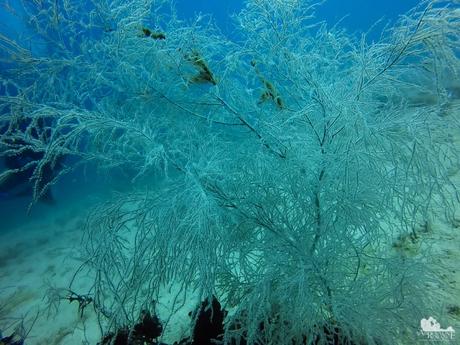
It is a privilege to see something rare in Mother Nature. That treasure, which only a select few has laid eyes on, makes us realize that there are so many things in this world that we simply don’t understand. For us, that experience is something humbling, something spiritual. Under the blue waters of Jagna in Bohol, a rarely seen spectral wonder touched our souls.
A gentle sunrise, the orange glow of a beautiful day, and an almost glass-like calmness over the Bohol Sea promised an excellent day of diving. Even from the perch of our room in Mahrjun’s Apartelle, we could clearly see rock and coral formations underneath the blue waters.
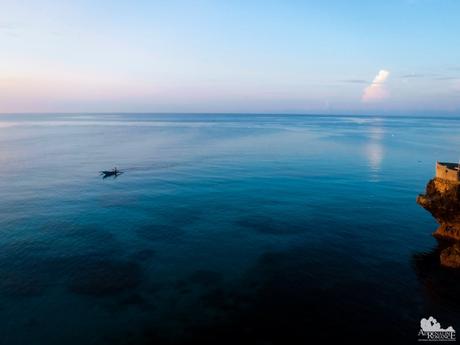
After eating a filling breakfast and preparing our dive gear, we went straight to Drift Divers in Paseo del Mar Resort. Because Jagna is a relatively untapped diving destination, no other diving outfitters have set up shop in town. Thus, Drift Divers enjoys itself as the sole dive center in Jagna.

Owned by a chatty and pleasant Italian immigrant named Sylvio Eandi, Drift Divers is a well-equipped, warm, and friendly outfit. The bamboo, wood, and nipa office, accentuated with traditional furnishings and decors, are very Filipino. Anyone feels as if he or she is stepping into a welcoming home rather than a cold business establishment.
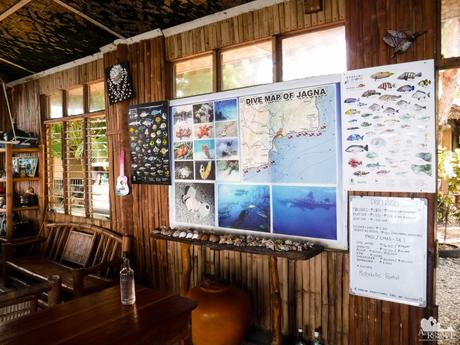
The exterior of Drift Divers is even more comfortable. For a start, the entire facade of Paseo del Mar faces the sea, feeding guests with a continuous view of a lovely seascape. Lay down on one of their bamboo lounge chairs, and you will be lulled to a lazy snooze in minutes. You will feel your stress blown away by the gentle sea breeze.
Jesse Acebes, the owner of Paseo del Mar, has built a nice gazebo where guests can relax. He plans to repair the bridge that leads to it; the bridge was destroyed during a recent storm.
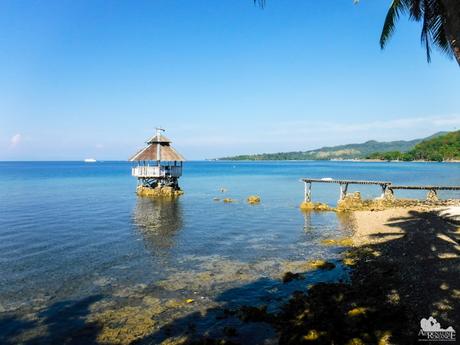
After meeting our PADI Dive Instructor Jason, we headed to our boat, a small Bantay Dagat patrol boat. Sylvio said that his own dive boat was still being docked for regular maintenance. Sheila and Edgar was as excited as the Bantay Dagat personnel who are escorting us.
From left to right, that’s fellow blogger and diver Edgar of EAZY Traveler, Silvio, Team Sweetie, and our dive instructor/guide Jason.
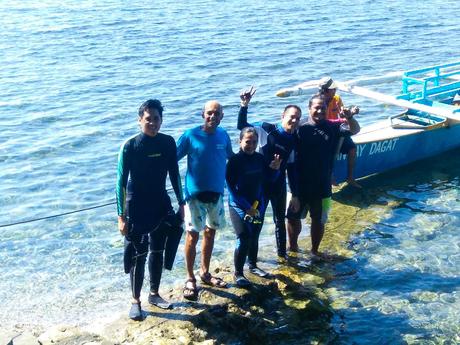
(Photo credit: Drift Divers)
And off we go to our dive site! Bantay Dagat personnel keep on the lookout for illegal fishermen who hunt for fish, shellfish, and other marine flora and fauna inside the protected marine sanctuary that lines up Jagna’s coast.
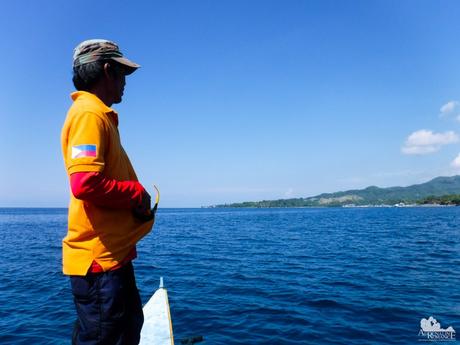
Which brings us to one of the best things about diving in Jagna. Because a gigantic reef is just situated a few hundred yards offshore, divers don’t actually need to hire a boat. They simply need to ride Drift Divers’ multicab since the highway is right along the shoreline. Believe it or not, shore entry is the most convenient way to explore the dive sites of Jagna.
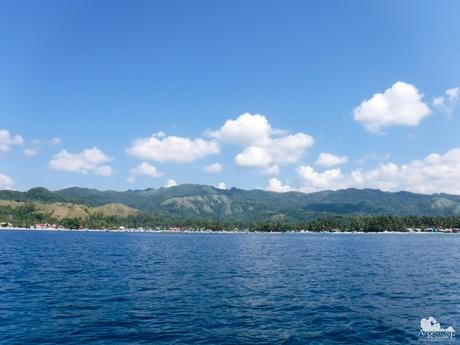
Locals are still allowed to fish but not in the protected areas. Thus, they need to sail a little bit farther than their usual fishing grounds.
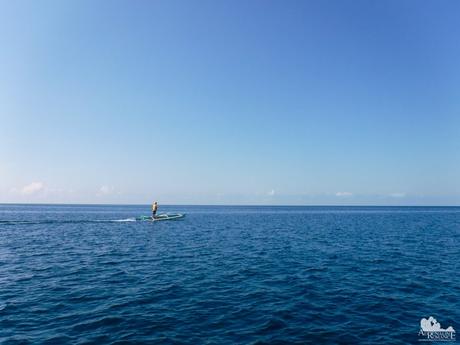
While most of Jagna’s coastline is relatively flat, parts of it are broken by high and magnificent sea cliff such as these. These are home to various sea birds, reptiles, crabs, and other creatures that call the sea their home.
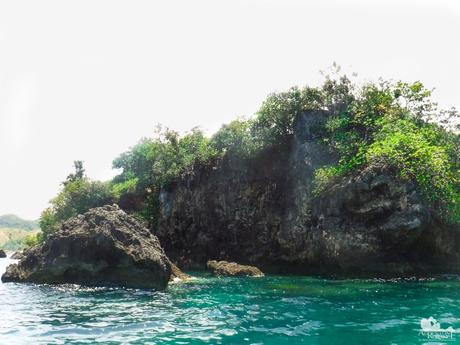
We arrived at the Cantagay Marine Sanctuary around 15 minutes later. To our pleasant surprise, the dive site was actually just a short distance from Mahrjun’s Apartelle where we were staying for the past three days.
After donning our dive gear, we back-flipped into the water and was immediately greeted by an immense field of beautiful and healthy corals. It is reminiscent of the coral fields in the Chapel Dive Site in Apo Island.
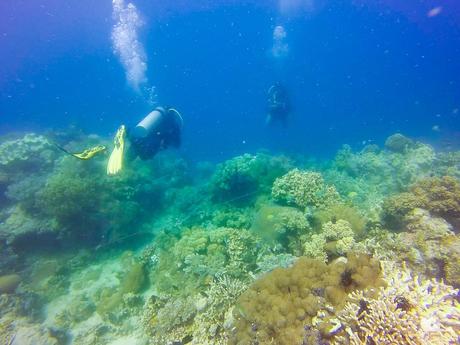
Moose horn corals are plentiful in the Cantagay Marine Sanctuary. They have this nice, gentle shade of periwinkle.
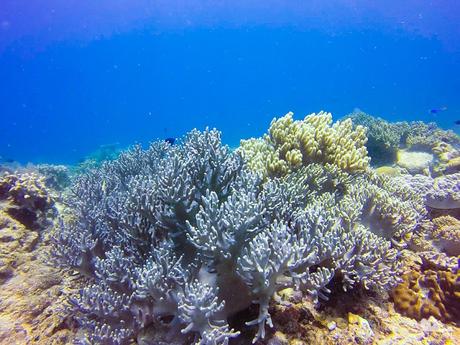
Where there are healthy corals, there are lots of fish. Five minutes into our dive and we saw massive schools of damselfish, assessors, Moorish idols, tangs, and more. It’s an entire biological metropolis in here!
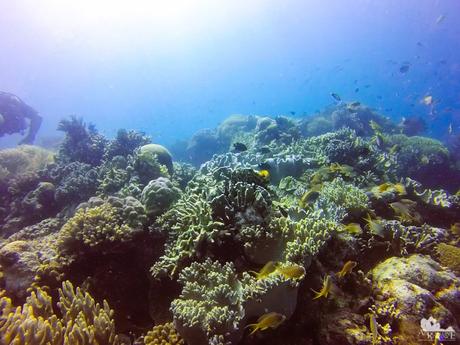
We also spotted this large and handsome brain coral. Brain corals are reef builders and can grow as large as 6 feet in height. They can live up to 900 years! Because of their spherical shapes, they can resist strong currents better than branching corals.
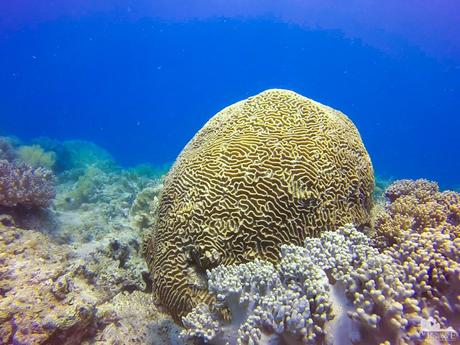
The Cantagay Marine Sanctuary is a double reef, the first we’ve ever seen. As its name implies and as you can see in the photo below, a double reef is arranged as layers like shelves. The second layer of reef hangs just underneath a short kantil.
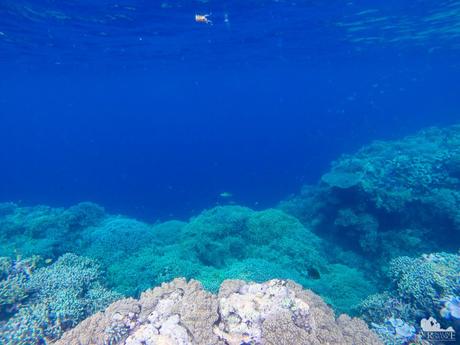
We had a funny encounter with a gentle denizen of Cantagay Marine Sanctuary as we descended towards the bottom. This young hawksbill turtle was resting happily on the corals as we approached her from behind. I tried to approach her quietly so I can take a better photo of her. Unfortunately, the bubbles from my regulator startled the turtle, and she swam away as fast as she could.
Poor turtle. Sorry for disturbing your nap, girl.
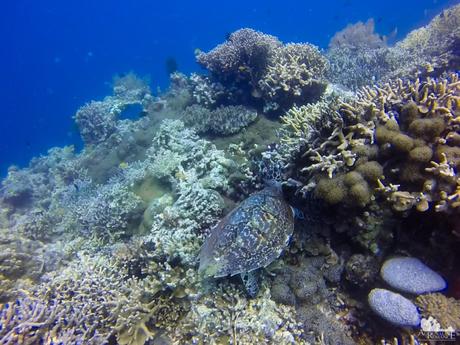
Jason guided us 110 feet down into the deep blue; this is the deepest we’ve ever dived. The short kantil gave way to a gradual sandy slope. Beyond that, we saw a mysterious, spectral—something. By all accounts, the figure looks like a hideous, shapeless ghost, its arms outstretched beneath its tattered, diaphanous cloak.
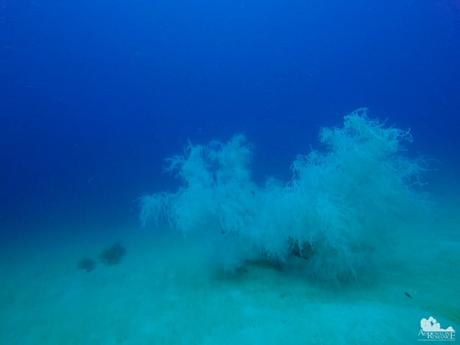
As we moved closer, we left our supernatural assumptions—and fears—behind for we know that we have laid eyes on the secret and prized treasure of the sanctuary. We have come face to face with rare tree-like black corals. These are deep-dwelling corals that thrive 100 feet or more below the water.
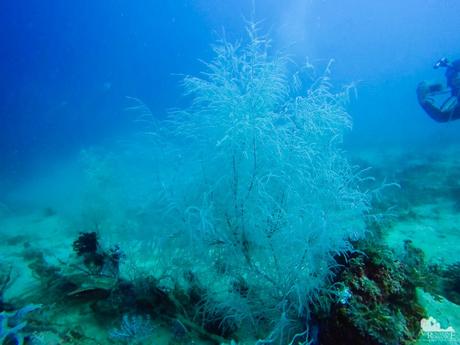
We studied one clump of such corals up close. Judging from its shape and its location in the tropics, these black corals most likely belong to the genus Aphanipathes of the Antipathidae family.
The coral’s living tissue (its polyps) is brightly colored, but its branching skeleton is black or dark brown, earning the species its namesake. They were once harvested as semi-precious gems. Deep-diving fishermen would pluck them off their perches, shave off the white polyps, dry the skeletons, and sell them as decorations or jewelry.
Poaching them is now prohibited since black corals are now listed as an endangered species in the Convention on International Trade in Endangered Species (CITES).
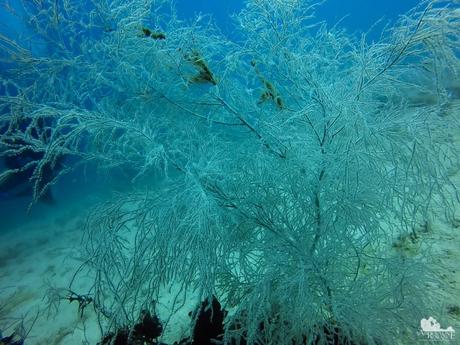
The rough texture of the black coral skeletons make them favorite perches for several marine creatures. Gobbies and damselfish bite off small sections of the skeleton to create nests for their eggs. Barnacles attach themselves to the rough surface.
During our dive, we found a small colony of pearl oysters, along with black crinoids, glued to the bottom of the coral’s trunk.
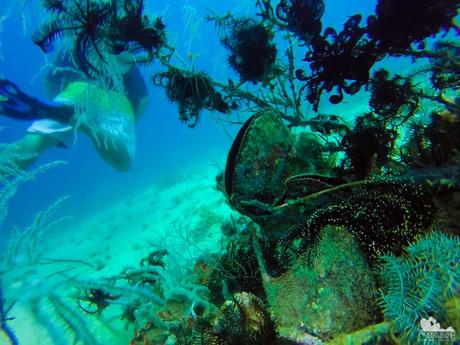
A blue multi-limbed sea lily attaches itself to a thick stalk of a black coral. A sea lily starts out as a free-swimming feather star. But once it finds a suitable surface, it grows a stalk to anchor itself to that surface. Sea lilies look like plants, but they are actually animals.
Sea lilies are filter feeders, catching plankton and bacteria with their feather-like arms. Certain species of sea urchin feed upon the lilies, but the latter may evade predators by breaking off from their stalks and swimming to safety.
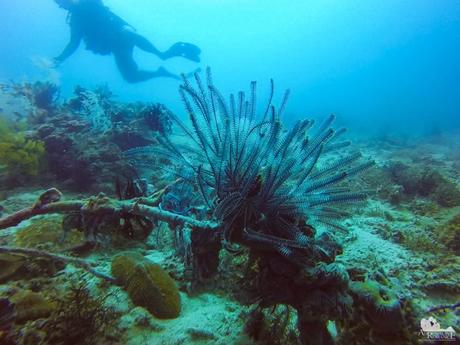
It was quite strange seeing an anemone and its colorful clownfish residents this deep. Normally, we encounter them on the shallower parts of the reef.
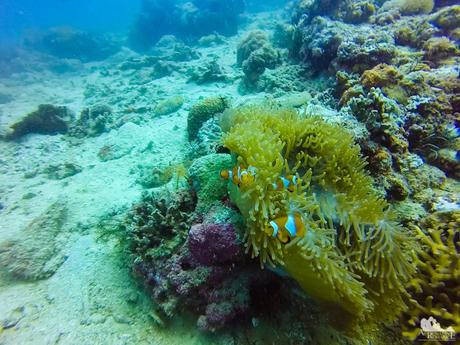
This strange creature is a stichopodid, a species of sea cucumber. And it’s a big, fat one at that; this specimen is easily more than a foot long! We guess it did not feel threatened because it did not regurgitate its cuvierian tubules—sticky white threads that entangle or surprise predators.
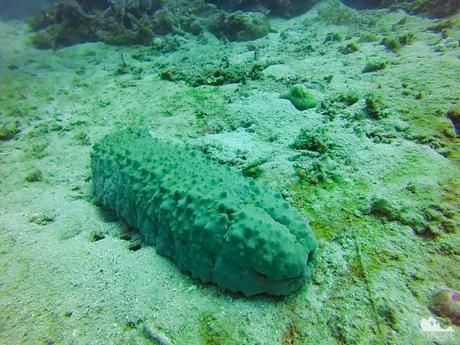
Jason motioned us over and pointed at something with his metal probe. At first, we thought he was just indicating a fat starfish. But upon closer look, he was actually pointing at a black and blue nudibranch. At more than an inch long, this one is quite large.
Nudibranches, often called sea slugs, are sea mollusks without shells. They are popular subjects for underwater photographers due to their beautiful colors and interesting forms. Marine biologists have identified over 2,300 species of nudibranches worldwide.
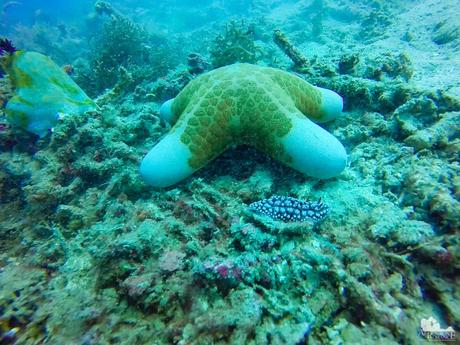
We couldn’t stay long in deep water due to nitrogen build-up in our circulatory system. So we slowly made our way back to shallow water at 50 feet. Once again, we were surrounded by forests of soft and hard corals. That’s a nice bridge for fish to play in. Then we noticed a lot of blue dameselfish are congregating in that spot. What could it be?
Well, it turned out that we just came upon a cleaning station. A cleaning station is an area in a reef where fish, turtles, and other aquatic life congregate so they could be cleaned by smaller creatures, notably bluestreak cleaner wrasses and cleaner shrimps.
You see, tiny ectoparasites latch themselves on fish, causing discomfort, itching, and infection. Since fish do not have fingers to pluck these parasites off, they head to a cleaning station where wrasses and cleaner shrimp eat off the parasites, dead skin, and scales. The benefit is mutual; the fish get a shower while the cleaners get a nutritious meal.
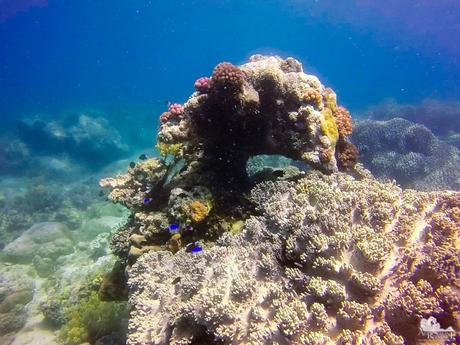
The Cantagay Marine Sanctuary is one of the richest reefs we’ve ever seen. But we know that we just uncovered a few of its secrets. According to Jason and Silvio, and further attested by Drift Divers’ Facebook photos, there has been sightings of whale sharks, reef sharks, sea snakes, moray eels, schools of jackfish, and more. There are even rare and well-camouflaged conch shells thriving here.
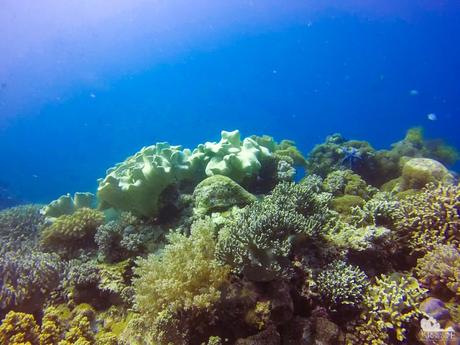
As usual, action speaks louder than words. Or photos. So we included a short video of our dive. Check out the startled turtle. Hehehe!
Snorkeling
Non-divers can enjoy the marine sanctuary as well. Similar to the Colase Marine Sanctuary in Samboan, Cebu, the reef begins just a few hundred feet away from the shore. This was where our non-diver companions were swimming around when we finished our dive.
In just 5 or 6 feet of water, snorkelers can witness the revelry of Jagna’s underwater kingdom.
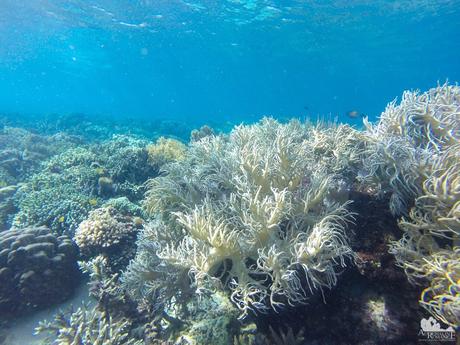
Immense table corals form like living arenas in shallow waters. Like most corals, they are solar powered, using photosynthesis for food production.
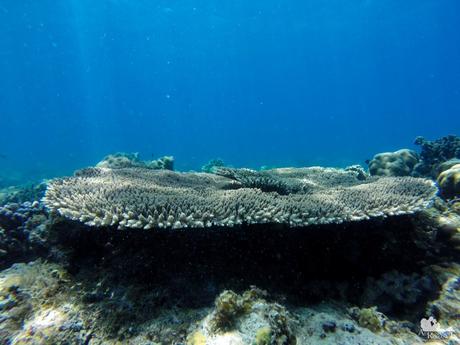
Lettuce leaf corals are usually mistaken for plants. They are susceptible to bleaching due to their extreme sensitivity of changes in water temperature.
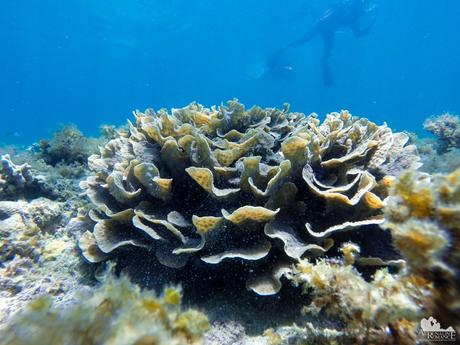
Swimming all day can really take its toll on one’s tummy. Thus, after having our fill with diving and snorkeling, we went back to Paseo del Mar to enjoy a delicious buffet lunch. The tinola was superb!

Special Thanks
We would like to thank Silvio Eandi, the owner of Drift Divers, for letting us explore and enjoy his playground. This Italian fellow, who is never without his dog Gigi, is very friendly and accommodating. His various tales from his homeland and in Jagna are absolutely worth a day and/or night of cold beer! He will ensure you have a great dive and a fun time in town.

(Photo credit: Silvio Eandi)
Thank you very much to Jason Todtod, Drift Diver’s PADI Dive Instructor, for making our dive enjoyable and safe. You are an amazing instructor, and we should dive with you more often.
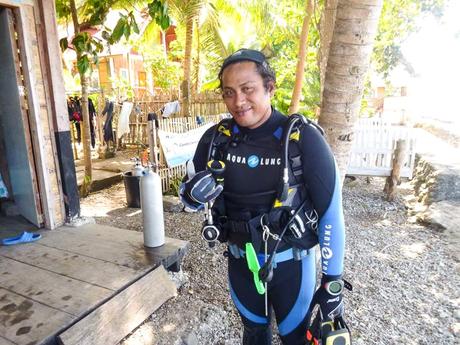
(Photo credit: Jason Todtod)
Rare black corals, vulnerable and endangered marine life, and other uncommon wonders of the sea have found a home in the Cantagay Marine Sanctuary. The virgin beauty of this place is truly astounding. Now, it is up to us—locals, visitors, divers, the LGU, and everyone who loves Mother Nature—to protect the inhabitants of this underwater world from becoming true specters.
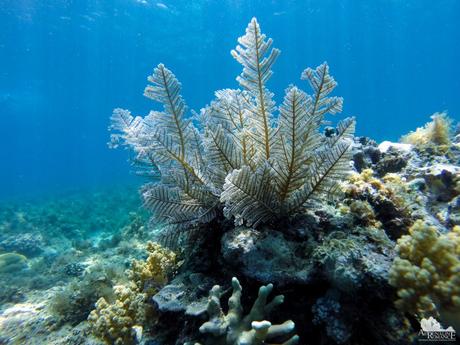
Contact Details
For your scuba diving adventures in Jagna, get in touch with Drift Divers, presently the only scuba diving outfitter in Jagna. They are also a pro-environment group, educating Jagnaanons about sustainable eco-tourism practices. Use the contact details below for rates and other information:
- Mailing Address: Drift Divers, Paseo Del Mar Dive Resort, Jagna, Bohol, Philippines 6308
- Mobile Phone Number: 0905-349-4590
- Landline: (038) 531-8604
- Email: [email protected] / [email protected]
- Website: Paseo Del Mar
- Facebook Page: Drift Divers
- Paseo del Mar Facebook Page: Paseo del Mar
Aside from dive adventures, they also offer PADI certifications of all levels.
Tips
1. For optimum visibility, it is best to dive in the morning when the sun is shining and at the right angle. At times, a gentle current stirs up the silt, but it’s not really that bad that it obscures your visibility.
2. The Cantagay Marine Sanctuary is only one of several dive sites in Jagna. All these dive sites are rarely visited, so they are pristine and undamaged. They have different conditions and characters, which means that some spots require a higher level of scuba diving experience and skill. Be sure to tell your scuba instructor/Divemaster your skill level.
3. All dive sites in Jagna can be accessed via shore entry. Because the highway is right alongside the coastline, a Drift Divers multicab will take you from one dive site to another. Of course, you can opt for a boat dive, and that will entail an extra expense for the boat rental.
4. Establish neutral buoyancy as soon as descend you can to avoid touching the seabed.
5. The black corals rest at more than 100 feet. Do not dive down those depths without the supervision of your scuba instructor/Divemaster, especially if diving at such depths is prohibited by the terms and conditions of your license.
6. The dive shop will take care of your scuba equipment, so you don’t have to worry if you are not bringing your own set. Pack light but do bring the following:
- extra water ( at least 2 liters per person)
- swimwear
- aqua shoes or slippers
- hat
- sarong or towel
- snacks or packed meals
- personal medication and toiletries
- waterproof camera
- mask and snorkel (for snorkelers)
5. Be a safe and responsible diver. Always observe the Leave No Trace principle. Never touch, disturb, tease, or collect marine wildlife. Remember we are in a protected area and an alien world that demands respect.
Save

